White Smoke from Exhaust on Startup Problems & Solutions
When you own a car, there are certain skills that you need to master. First of all, it is obviously driving! After you have become efficient in driving, you can move towards other requirements.
The second thing to be considered when you own a car is the knowledge of auto mechanics. You should always be aware of when something is wrong. Otherwise, you might be facing the consequences.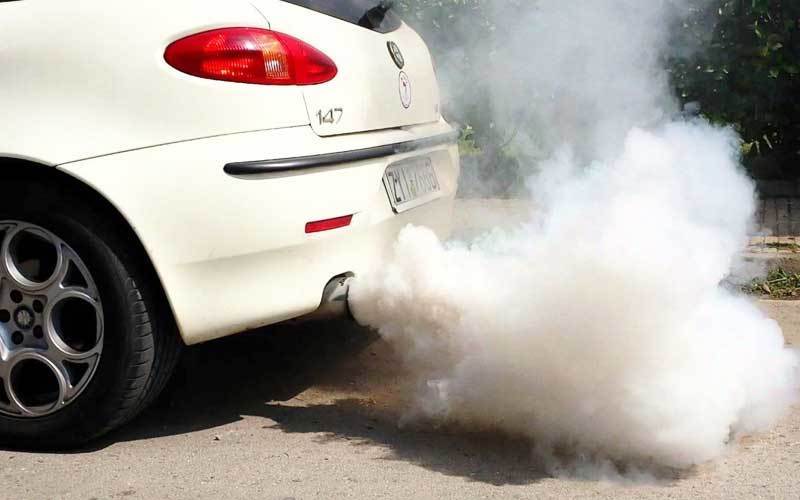
What should you check when observing White Smoke from Exhaust on Startup
You need to be conscious of a few things in order to identify when white smoke indicates danger. First, we will discuss the conditions in which there shouldn’t be a problem.
Observing the Thickness of the Smoke
It is established that the thicker the smoke is, the more dangerous it is. If you notice very thin vapors coming out of the exhaust, then you have nothing to worry about.
White Smoke in Winters
During winters, white smoke is commonly observed coming out of the exhaust. It is due to a well-known physical phenomenon called condensation.
When you start your car on a cold day, the water vapors start to evaporate due to sudden warmth, absorbing heat, and form a white smoke.
Conditions of White Smoke from Exhaust on Startup should be a problem
Now we will discuss the conditions when white smoke can be harmful and what could be its possible causes.
1. Prolonged White Smoke during Winters
White smoke is not an issue in winters if it disappears after a small period of time. But if the problem persists a considerable time after you have started your journey, the reason is not condensation but something else.
2. Leaks in the Coolant
White smoke coming out of the exhaust could sometimes indicate that there is an internal leak in the coolant. One good aspect of this problem is that white smoke is not the only indicator of coolant leaks.
With coolant leaks, you will also observe a sweet odor. You might also notice a decrease in the coolant level in the reservoir. Thus, the coolant leaks and adds in the engine oil.
The mixture of coolant and oil produces a milky smoke. This problem must be addressed quickly. If left unchecked, it can result in overheating of your engine.
The remedy in this condition is simple; change your coolant.
3. White smoke due to transmission fluid
When your car engine is faulty, it starts absorbing more fluids from the vacuum pipe. It results in contamination of the oil-producing white smoke.
Fluid transmission results in some other changes as well. One of which is that it will produce a smell like burned oil. You should always be vigilant and detect such signs in time to maintain the healthy condition of your engine.
To deal with this problem you need to change the vacuum modulator valve. But if the level of transmission fluid is below an average value, you just need to add the remaining amount.
4. A Cracked Cylinder Head
One of the major causes of white smoke is a crack in the cylinder head. When the cylinder head is cracked, it results in coolant moving into other cylinders and sometimes even into the combustion chamber.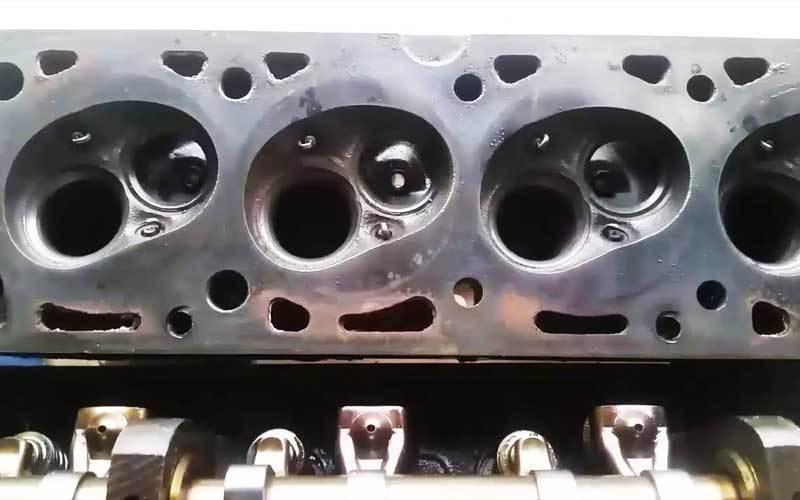
5. White smoke in diesel cars
White smoke in a diesel engine means that the fuel pump has stopped working. This pump basically sends diesel into cylinders of the engine. The time frame during which the diesel is pumped in the car is of key aspect.
The diesel has to be pushed into the cylinder just before the end of the compression stroke, or it might result in an overflow of diesel.
When there is a fault in the timing mechanism, it results in white smoke emerging from the exhaust. It also contributes to the bad efficiency of your engine.
This problem is better solved with the help of a professional as dealing with it requires an exceptional level of skill. One mistake could result in the critical failure of your engine.
6. Faulty Pistons
Sometimes the white smoke could be produced due to poor quality pistons. A poor quality piston has bad rings, and during the to and fro motion of the pistons, the rings become slowly ineffective.
Weary piston rings mean that oil would leak from the cylinders during the strokes and mix with the fuel. It thus produces a mixture rendering to white smoke.
This problem can’t be dealt with your own as you can’t reach the pistons easily. So it is suggested that you consult a good mechanic, in case you can’t diagnose the problem yourself, to look for a fault in the pistons.
7. Leakage in the engine valve seals
The engine valve is responsible for managing the flow of fuel in the cylinder during the piston strokes. If there is a leak in the seals, it will result in the inefficient transmission of fluids.
The faulty transfer of fluids results in the inappropriate mixing, and white smoke is produced.
8. Excess fuel in the combustion chamber
The excess of fuel in the combustion chamber mainly results from a malfunctioning fuel injector. The defect can be of any type. It can be that the injector is stuck in the open position, thus injecting fuel continuously.
It can also be that the O-ring used in the injector is faulty and not working properly.
When excess fuel is pumped into the engine, it becomes overloaded and hence can’t combust all the fuel. This un-combusted fuel comes out of the engine as a thick white substance.
The solution to this problem will simply be that you replace your fuel injector with a new one.
9. Variations in Oil levels
When it comes to the engine, the oil level is a very important thing to consider. The increase or decrease in the amount of oil in different parts from its nominal value can result in bad functioning of the engine resulting in white smoke.
A rise in oil level above the combustion chamber is alarming as this oil than mixes with the fuel and burns with it producing white smoke.
This problem mainly occurs due to fault in the piston or crack in the interior surface of the engine, so the best remedy is to change the engine.
A decrease in oil levels, also known as oil falling occurs when oil is descended through the exchange valves into the cylinders due to bad sealing. Hence, the oil mixes with the fuel resulting in white smoke after combustion.
10. Water Contamination of Fuel
One of the causes of milky smoke is the mixing of water with fuel. This can result due to several reasons.
One of the reasons might be that the fuel you bought, to begin with, was of poor quality and mixed with water. The other could be precipitation of water in the combustion chamber.
The liquefaction problem is somewhat identical to the problem in winter as the water vapors than mix with combustion gases producing white smoke. However, this problem has to be dealt with.
This problem can be solved by a layman. You just have to reduce the air level in the engine so that liquefaction does not occur. But if the water is in the fuel, you have to drain it.
We have discussed almost all the possible causes of white smoke and their remedies. It’s time that we work out the preventive measures that should be taken in order to avoid these problems.
Regularly Checking the Gasket
There are two failures in the gaskets that can result in white smoke. First is the failure of the intake area, and the second is crack in the head.
Both of the problems in the gasket can be easily identified. If there is rust or some type of leakage, it means that the gasket is in bad condition.
The gasket is responsible for the distribution of combustion mixture and coolant, and its breakdown can result in their mixing.
Regularly Check Coolant Levels in the Engine
The coolant level is an important consideration when dealing with white smoke. If the coolant level gets low, the engine is overheated, which then results in the damage in the cylinder head.
The damaged cylinder head results in the mixing of coolant and fuel. This mixing results in white smoke.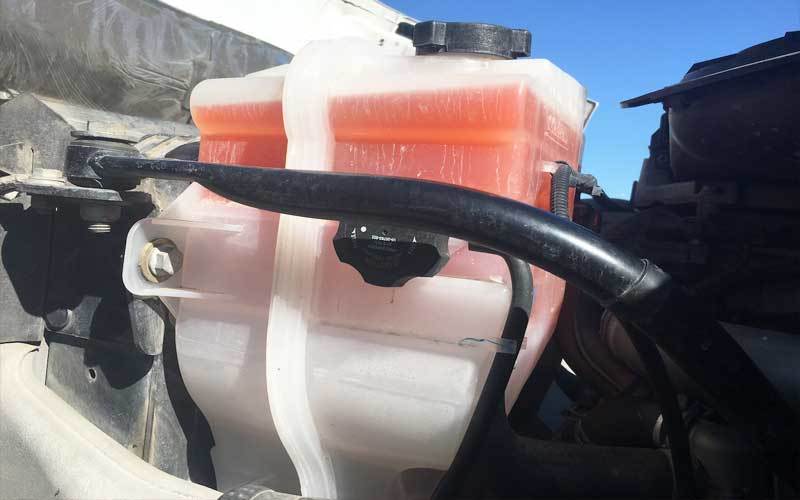
If left unattended, it may create several problems for you. It is ideal that you take your car to a mechanic who is more professional and experienced in dealing with such issues.
However, if you decide to deal with it, make sure you take precautionary measures and follow the right steps to deal with the problem rather than making it even worse!
Share this content:
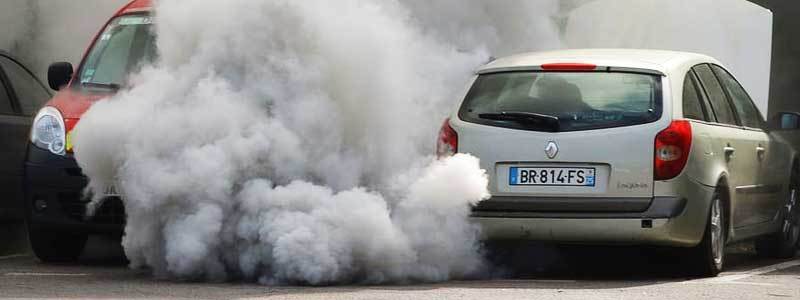

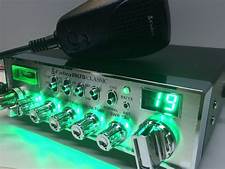



Post Comment